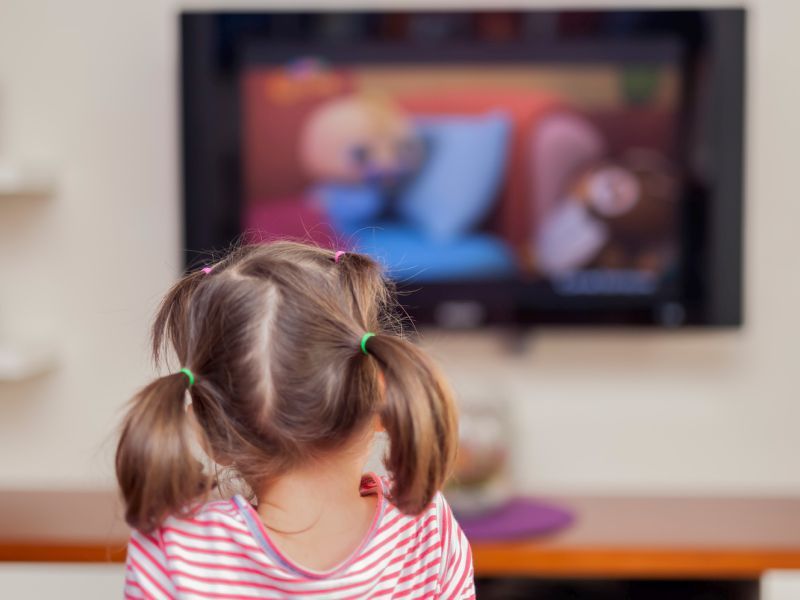FRIDAY, May 14, 2021 (HealthDay News) — When the COVID-19 pandemic kept young kids indoors, their time spent watching TV and other screens rose dramatically.
That’s the finding of a new study that investigated the screen time of kindergarteners from low-income families in Ohio. The researchers found that their use of television, video, movies, short clips, and apps or games on any electronic device topped six hours a day in May and June of 2020.
That was nearly double previous levels of screen use reported in earlier studies.
“We found a high level of media use compared to what many experts think is appropriate for this age group,” said lead author Rebecca Dore. She is senior research associate at Ohio State University’s Crane Center for Early Childhood Research and Policy, in Columbus.
“Some of that time spent using media was positive: watching educational videos and connecting with friends and family. But the amount of time they spent is something we should be aware of,” Dore added.
Managing screen time while childcare was shut down may have been harder for caregivers from low-income households than for others, the study authors suggested.
“Increased screen time may be particularly concerning for children from low-income households who had higher levels even before the pandemic: over 3½ hours per day compared with less than 2 hours for children from high-income homes,” Dore said.
The study included 151 low-income caregivers of kindergarteners who responded to 12 questions about kids’ media use on the most recent weekday and weekend day.
The kids averaged 6.6 hours a day of media use (6.8 hours on weekdays and 5.8 on weekends), the findings showed.
Forty-seven percent of respondents reported increased entertainment use; 45% said use had increased as a way to occupy the child’s time; 42% were using media more often to maintain relationships with remote family and friends; and 34% said their child was spending more time using screens for family bonding.
About 61% of caregivers said the child was using media for learning more than usual, which researchers suggested may have included watching educational TV or using educational apps unrelated to formal schooling. About 84% of kids had direct contact with their teachers once a week or less, with 53% reporting none.
Screen time was higher in homes with more children. Girls spent more time than boys using media to connect with family and friends. Dore said caregivers should be encouraged to offer boys more support in maintaining relationships through technology when they can’t meet in person.
Laura Justice is professor of educational studies and executive director of The Crane Center. She said, “Importantly, we saw increases in media use in a lot of areas often considered positive, such as learning and fostering friendships, suggesting that caregivers may have been using media to supplement children’s educational and social experiences at a time when in-person options were not safe.”
But, she added, “these families don’t have some of the resources that more advantaged families have to help with children while the parents work or do other things. For low-income families, occupying a child’s time may also be very important and necessary at times.”
It is not clear whether the high levels of media use found in this study would also be found in more affluent families, the researchers noted.
The findings were published online recently in the Journal of Developmental & Behavioral Pediatrics.
More information
The American Academy of Child and Adolescent Psychiatry has more facts about screen time and kids.
SOURCE: Ohio State University, news release, May 12, 2021
Copyright © 2025 HealthDay. All rights reserved.

